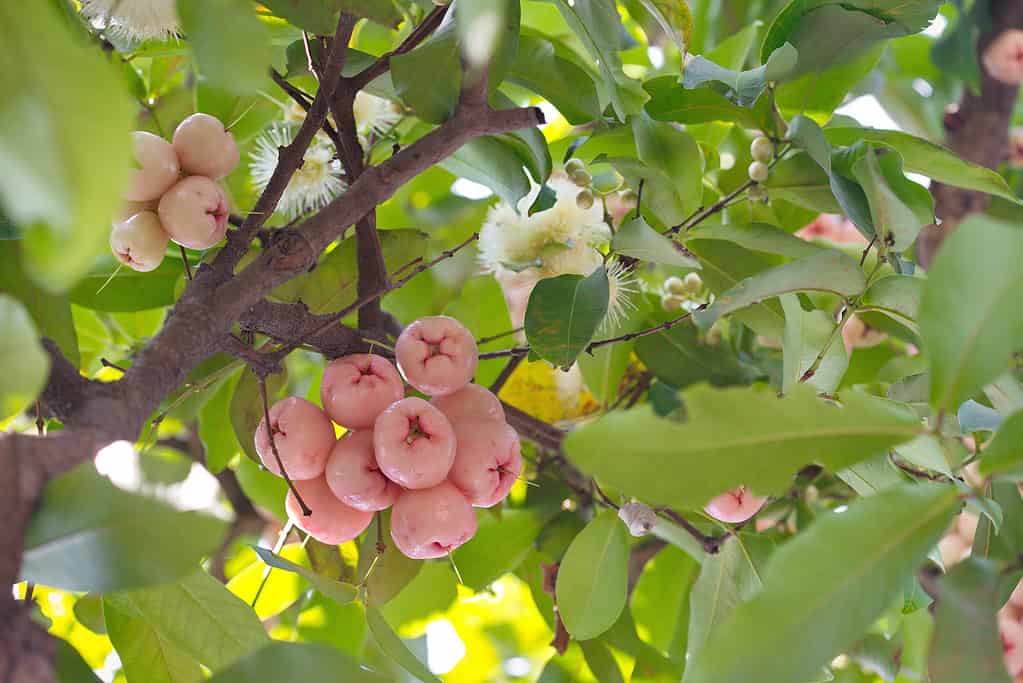The Tree of Life is an iconic symbol found in religious folklore around the world. Typically, it has connections to ideas of fertility and eternal life. In mythology, it is often paired with a Tree of Knowledge. The two together are sometimes combined into a World Tree connecting Heaven and Earth. Ancient Norse religion developed rich lore around Yggdrasil, the World Tree. The Tree of Life is a core symbol in the Christian Bible. This article will focus on the meaning, symbolism, and significance of this ancient archetype as depicted in the Bible.

The concept of a Tree of Life is an important symbolic idea in the Bible.
©iStock.com/NoonVirachada
The Tree of Life in the Garden of Eden
The first book of the Bible, Genesis, describes God’s creation of the world and the first humans. He placed them in a garden called “Eden” with everything they needed. The only rule they had was not to eat the fruit of the Tree of Knowledge, planted at the center of the garden. Interestingly, God did not forbid them to eat from the Tree of Life, which was also there. However, the first man and woman disobeyed God’s rule and ate the forbidden fruit. As a result, he barred them from the Garden of Eden specifically so that they would not go on to eat from the Tree of Life and live forever in a lost and sinful state.

In the story of the Garden of Eden, God forbade eating from the Tree of Knowledge.
©iStock.com/Lubo Ivanko
The Tree of Life in the Life of Jesus
The Tree of Life as such does not appear in the life of Jesus. However, the writers of the New Testament sometimes referred to his crucifixion as being “nailed to a tree” or “hung on a tree” depending on the translation. Symbolically, the cross of Jesus, which was an instrument of death, become a “Tree of Life.” That is to say, in the Christians’ view, the cross symbolizes the promise of eternal life because of the sacrifice Jesus made there.

In Christian symbolism, the cross that was an instrument of death is, paradoxically, a source of life.
©Arcady/Shutterstock.com
The Tree of Life in Heaven
The Tree of Life makes a final appearance in the last book of the Bible, Revelation. The author of the book describes a vision of Heaven with a river of clear water flowing from God’s throne down the center of a street. A marvelous tree grows on both sides of the river and yields 12 different kinds of fruit. It heals the nations and gives people eternal life. So, the end of the Bible comes full circle, back to the original Tree of Life that was rejected by humanity. In heaven, that mistake is forgiven and access to eternal life is always available.

The last book of the Bible envisions a Tree of Life that will be a source of healing and eternal life.
©Marie Shark/Shutterstock.com
The Tree of Life for the Non-Religious
If you are not a religious person, this symbol can still be meaningful for you. Trees are essential to life on Earth, removing carbon dioxide from the atmosphere and giving off oxygen. They provide vital building materials for structures, furniture, paper, and other goods. Fruit and nut trees are a significant source of nutrition for humans and many other animals. Trees shade us from the blazing heat of the sun. They provided multi-storied habitats for a wide range of insects, birds, reptiles, mammals, and other wildlife. And besides all that, they’re beautiful. Who doesn’t feel healed and refreshed walking outdoors under the trees and taking in some fresh air? As a non-religious person, you might still choose to include “Tree of Life” symbolism in your life as a celebration of the remarkable natural world we enjoy so much.

Regardless of our religious beliefs, we can all agree that we appreciate trees!
©Jon Bilous/Shutterstock.com
The photo featured at the top of this post is © Jedi94, CC BY-SA 4.0, via Wikimedia Commons – License / Original
Thank you for reading! Have some feedback for us? Contact the AZ Animals editorial team.







